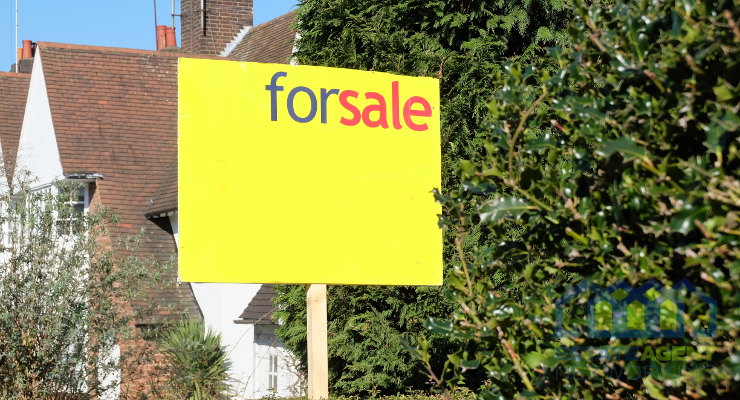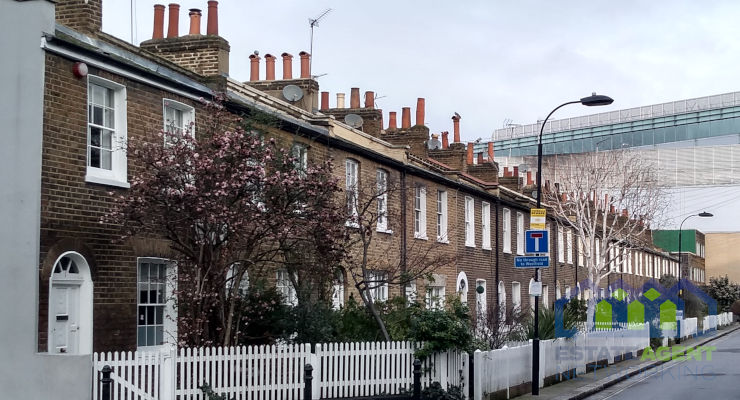10 Weird and Wonderful things about flats!
With the global population predicted to rise from the current 7.6 billion to 9.8 billion by 2050, and with two thirds of us expected to be living in cities by then, it’s highly likely that we’ll have to get used to living ever closer to our neighbours!
Flats already account for a high proportion of homes in the UK. The Government estimates are that there are 2.75m private leasehold flats in England – about an eighth of all dwellings – and this figure doesn’t include Scotland and Wales.
So when the blocks of flats insurance specialist Deacon* told us 10 weird and wonderful things about flats past, present and future, we just had to share them with you!
1 The Romans built the first flats
Hands up if you knew it was the Romans who built the first flats! From the middle of the first century BC, Rome’s success led to massive population growth. Housing was a major challenge, and to meet it the Romans learnt to build higher and stronger structures. The use of concrete, based on lime and volcanic sand, allowed them to create new architectural forms, while a standardised brick allowed for speedy and reliable construction. Their early multi-storey blocks, typically with shops on the ground floor, and apartments on two or more floors above, were called insula or “islands”. This was because they often occupied an entire city block, with roads flowing around like the sea.
2 Forest flats!
At two apartment buildings in the heart of Milan trees sway on balconies and sunshine dapples the leaves of thousands of plants creating a vertical forest! The brainchild of Milanese architect Stefano Boeri, the Bosco Verticale (Vertical Forest) uses more than 20,000 trees and plants to adorn the high-rise buildings from top to bottom – a project now being exported all over the world, from China to the Netherlands. Few people would deny that trees are good for cities and the people that live in them – so more power to his elbow.
3 Forgotten for 70 years
This is one of those stories that just has to be read to be believed! Way back in 1934 and before the outbreak of hostilities of WWII, a famous actress called Marthe de Florian fled her Paris apartment for the south of France – and she never returned. Nothing remarkable in that, but what is extraordinary is that the owner of the building never noticed! When he finally died in 2010, the experts called in to assess the value of his estate stumbled across a scene that was frozen in time. The flat was just as it had been left, untouched by time!
4 Shapeshifters
It may sound like the stuff of science fiction, but the world’s first shape shifting rotating tower block is set for Dubai by 2020 according to architectural firm Dynamic Group.
5 Recycling on a gargantuan scale
Some of the biggest re-cycling projects of the millennium are taking place in our inner cities, where familiar buildings are being saved from demolition or neglect by being converted into flats. That’s probably good news as it means the original character and features of what are often landmark buildings are preserved. The BBC Television Centre at White City is one example, as is Battersea Power Station and the Hoover Building in London. The first residential tower block in the UK, “The Lawn“, was constructed in Harlow, Essex in 1951. It too is now a Grade II listed building. Conversions are taking place across the country and there seems to be no shortage of buyers for urban loft apartments in prime city centre locations, so expect the trend to continue.
6 That whistle in your apartment block is a train coming through!
Chinese planners didn’t let a little thing like a railway get in the way of the need to build more flats in the emerging mega-city of Chongqing. The train line simply goes straight through the residential building!
7 Tallest, Smallest, Largest – where in the world?
Dubai’s iconic Burj Khalifa is currently the tallest skyscraper in the world standing at 72 metres high, but that is set to change. In 2020 the 1000 metre mile high Jeddah Tower, with serviced apartments, is set to claim the prize of being the world’s tallest building, for a while anyway. While in the Chinese city of Wuhan, with serious concerns of overpopulation looming, they’ve gone tiny. The city has built two person apartments that are only 50 square feet! But when it comes to the largest, then first prize has to go to The Copan Building in São Paulo, familiar to Sim City players as a building they can drop in. The 38-story residential building comprises over 1,160 apartment units and is home to more than and 5,000 residents!
8 Going underground and underwater?
It seems like the stuff of sci-fi but architects are looking seriously at the possibilities of building down rather than up! As long ago as 2011 a so-called Earthscraper for Mexico City was mooted, a 35-storey upside down pyramid. The concept is still on the drawing board, with a host of practical and structural challenges to overcome, and the Mexico City proposal is still the only plan to have been seriously put forward. And with 70% of the earth’s surface covered by water, surely underwater cities are next? Sure enough, Aequorea, a visionary city that would be built off the coast of Rio de Janeiro, has been proposed.
9 Most expensive
It’s no surprise that London ranks No.2 in the world for the highest cost of a city centre flat, second only to Hong Kong, but how does the cost of living vary within the UK? MSN Money took a look at the different costs of living in UK cities, with housing the major component. Not surprisingly London came out top, where you need £7090 a month to live a comfortable life. Oxford, Edinburgh and Brighton came next at around £5000 a month. Ouch! Of course, you can choose to commute and halve your living costs. Southampton residents need ‘only’ about £3000 a month, for example, although after years of rail strikes and woes, that could be cold comfort. If money were no object? The UK’s most expensive flat was valued in October 2018 at £160 million. It’s address? One Hyde Park, London. SW1
10 The last word…..the legacy of feudalism
People are often amazed to learn that, in this day and age, it is still possible to lose your flat and be left with nothing if you break the terms of the lease or don’t pay service charges! That applies no matter how long you’ve been paying your mortgage or service charges. In practice, it’s become harder over the years for a freeholder (also known as the landlord) to get you out and claim the flat, but it can happen. Where did such a feudal practice come from? Land law in Britain owes much to the feudal system that developed following the Norman Conquest with the rights to grant inferior interests (aka leases) in land and to take income from these. By the 16th century, the law of leases in England and Wales had morphed into a very confusing system, and an attempt to tackle this was the Law of Property Acts 1925, which limited ownership to either freehold or leasehold, which is pretty much where we are today. Interestingly, covenants on freehold property only define what you cannot do. On leasehold they can also say what you must do, for example, pay for the upkeep of an asset still ultimately owned by the freeholder! It’s all very different in Scotland, where no duty to pay ‘feu duty’ – the equivalent of ground rent – could be set up after 1974, and no residential lease for more than 20 years could be created. The feudal structure was finally abolished in Scotland in 2004 and further laws since have converted long leases over 175 years into straightforward ownership.
* Deacon has specialised in providing buildings insurance and associated products for flats and apartments for more than 29 years. Find out more at www.deacon.co.uk
Deacon is a trading name of Arthur J. Gallagher Insurance Brokers Limited, which is authorised and regulated by the Financial Conduct Authority. Registered Office: Spectrum Building, 7th Floor, 55 Blythswood Street, Glasgow, G2 7AT. Registered in Scotland. Company Number: SC108909
FP1129
The opinions and views expressed in the above articles are those of the author only and are for guidance purposes only. The authors disclaim any liability for reliance upon those opinions and would encourage readers to rely upon more than one source before making a decision based on the information. The sole purpose of this article is to provide guidance on the issues covered. This article is not intended to give legal advice, and, accordingly, it should not be relied upon. It should not be regarded as a comprehensive statement of the law and/or market practice in this area. We make no claims as to the completeness or accuracy of the information contained herein or in the links which were live at the date of publication. You should not act upon (or should refrain from acting upon) information in this publication without first seeking specific legal and/or specialist advice. Arthur J. Gallagher Insurance Brokers Limited trading as Deacon accepts no liability for any inaccuracy, omission or mistake in this publication, nor will we be responsible for any loss which may be suffered as a result of any person relying on the information contained herein. All the links provided were active and working correctly at the time of publication but may not work in future.









